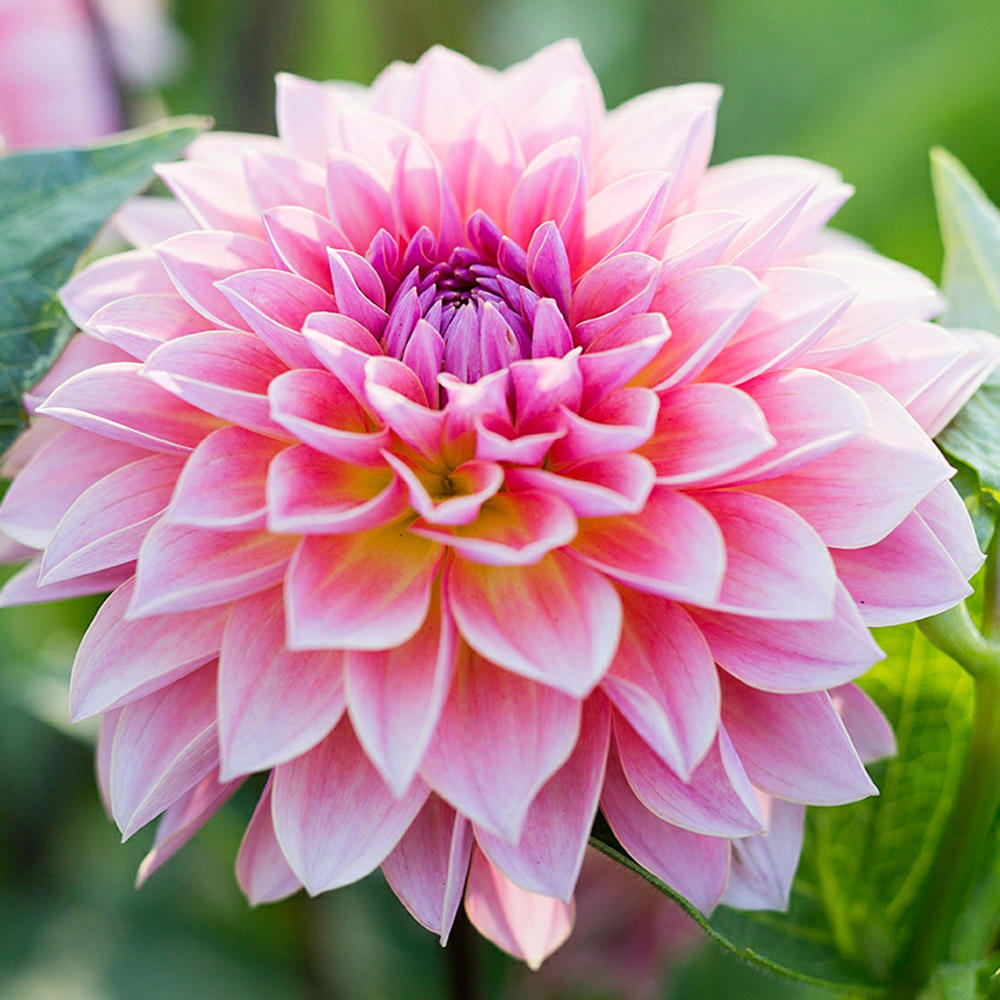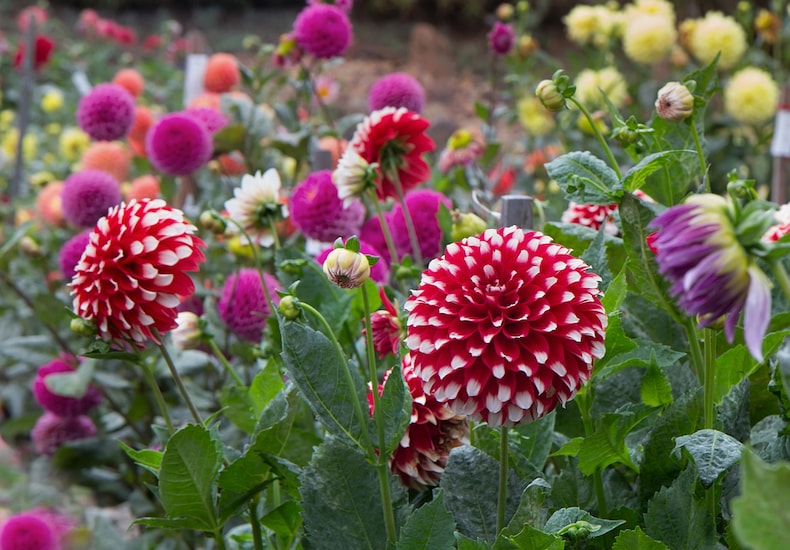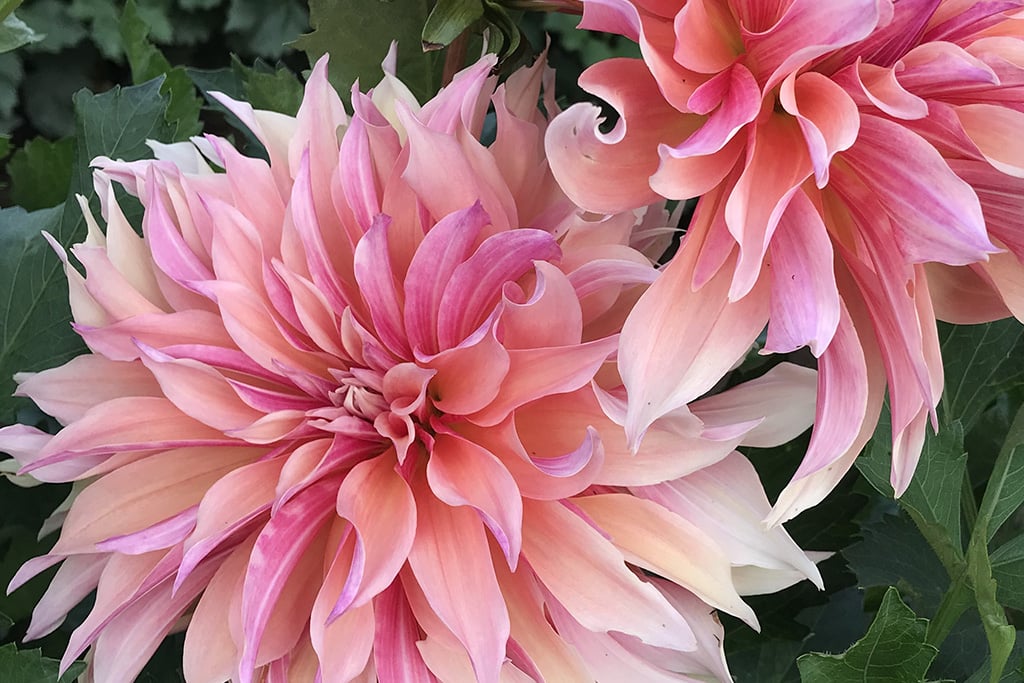What is a Dahlia Plant: Perennial or Annual?
Dahlias are one of the most popular and versatile flowers in gardens today, prized for their stunning blooms and ability to add a pop of color to any landscape. However, despite their widespread popularity, there is often confusion surrounding the dahlia’s life cycle. Is dahlia perennial or annual? The answer to this question is not a simple one, as it depends on various factors, including the specific type of dahlia, climate, and growing conditions.
In general, dahlias are tender perennials, meaning they can be sensitive to frost and may not survive harsh winters. However, with proper care and protection, dahlias can be grown as perennials in many regions, regrowing from the same tubers year after year. In areas with mild winters, dahlias can be grown as perennials, while in areas with colder winters, they may need to be treated as annuals or tender perennials.
Understanding whether a dahlia is a perennial or annual is crucial for providing the right care and attention. Perennial dahlias require regular maintenance, including deadheading, staking, and dividing, to ensure they continue to thrive year after year. Annual dahlias, on the other hand, are often grown for their quick blooming and high volume of flowers, but may require more frequent planting and care.
In this article, we will delve into the world of dahlias, exploring the characteristics of perennial and annual dahlias, and providing tips and tricks for determining which type of dahlia you have. We will also discuss the benefits and challenges of growing dahlias, and offer advice on how to care for these stunning flowers, whether you are a seasoned gardener or just starting out.
How to Determine if Your Dahlia is a Perennial or Annual
Determining whether a dahlia plant is a perennial or annual can be a bit tricky, but there are several factors to consider that can help you make an informed decision. One of the most important factors is the plant’s growth habits. Perennial dahlias tend to grow taller and produce more stems than annual dahlias, which tend to be shorter and more compact.
Another factor to consider is the hardiness zone in which you live. If you live in an area with mild winters, you may be able to grow dahlias as perennials, while in areas with colder winters, they may need to be treated as annuals or tender perennials. You can check the hardiness zone of your area by consulting a plant hardiness zone map.
Flowering patterns can also be a good indicator of whether a dahlia is a perennial or annual. Perennial dahlias tend to bloom later in the season and produce fewer flowers than annual dahlias, which tend to bloom earlier and produce more flowers.
By examining these factors, you can get a better sense of whether your dahlia plant is a perennial or annual. However, it’s worth noting that some dahlias can be a bit of a mystery, and may not fit neatly into one category or the other. If you’re still unsure, you can always consult with a gardening expert or do further research to determine the best course of action for your specific plant.
Understanding whether your dahlia is a perennial or annual is important for providing the right care and attention. By knowing whether your plant is a perennial or annual, you can tailor your care and maintenance routine to meet its specific needs, and ensure that it thrives and produces beautiful blooms for years to come.
Perennial Dahlias: Characteristics and Care
Perennial dahlias are a type of dahlia that can regrow from the same tubers year after year, making them a popular choice for gardeners who want to enjoy these beautiful flowers for years to come. One of the key characteristics of perennial dahlias is their ability to produce new growth from the same tubers, which can be divided and replanted to create new plants.
To care for perennial dahlias, it’s essential to provide them with the right conditions. This includes planting them in well-draining soil and providing full sun to partial shade. Perennial dahlias also require regular watering, but make sure not to overwater, as this can lead to root rot.
Deadheading is also crucial for perennial dahlias, as it encourages the plant to produce more flowers. Simply remove the spent blooms, and the plant will produce new flowers in their place. Staking is also necessary for perennial dahlias, as they can grow quite tall and may need support to prevent them from toppling over.
Dividing perennial dahlias is also an essential part of their care. This should be done every 3-4 years, as the tubers can become congested and produce fewer flowers. To divide, simply dig up the tubers, separate them, and replant them in a new location.
By following these care tips, you can enjoy your perennial dahlias for years to come. Remember to also protect the tubers during the winter months by applying a layer of mulch or bringing them indoors to a cool, dark place.
Perennial dahlias are a great choice for gardeners who want to enjoy these beautiful flowers year after year. With the right care and attention, they can provide a stunning display of color and beauty in the garden.
Annual Dahlias: How to Grow and Enjoy
Annual dahlias are a great option for gardeners who want to enjoy the beauty of dahlias without the long-term commitment of caring for perennial plants. These plants are grown from seed or tubers and typically bloom quickly, producing a high volume of flowers in a short amount of time.
One of the benefits of growing annual dahlias is their ability to thrive in a variety of conditions. They can be grown in containers or directly in the ground, and can tolerate a range of soil types and sunlight levels. However, they do require regular watering and fertilization to produce the best blooms.
To grow annual dahlias from seed, start by sowing the seeds indoors 6-8 weeks before the last frost date in your area. Transplant the seedlings outdoors when the weather warms up, and provide support for the plants as they grow. To grow annual dahlias from tubers, plant the tubers in the ground in the spring, after the last frost date. Water and fertilize regularly, and provide support for the plants as they grow.
Annual dahlias are a great choice for gardeners who want to add a pop of color to their garden without a lot of fuss. They are also a good option for gardeners who live in areas with harsh winters, as they can be grown as annuals and then discarded at the end of the season.
Some popular varieties of annual dahlias include ‘Bishop of Llandaff’, ‘Kelvin Floodlight’, and ‘Gallery Pablo’. These varieties are known for their vibrant colors and high volume of blooms, and are a great choice for gardeners who want to add some excitement to their garden.
Overall, annual dahlias are a great option for gardeners who want to enjoy the beauty of dahlias without the long-term commitment of caring for perennial plants. With their ability to thrive in a variety of conditions and produce a high volume of flowers, they are a great choice for gardeners of all skill levels.
Tender Perennials: The Gray Area Between Perennial and Annual
Tender perennials are plants that are sensitive to frost and may not survive harsh winters. Dahlias can fall into this category, as they are sensitive to frost and may need to be protected or brought indoors during the winter months. This can make it difficult to determine whether a dahlia is a perennial or annual, as it may not fit neatly into one category or the other.
One of the challenges of growing tender perennials like dahlias is protecting them from harsh winters. This can be done by bringing the tubers indoors and storing them in a cool, dark place, or by mulching the soil to protect the tubers from frost. It’s also important to choose varieties that are known to be more cold-hardy, such as ‘Bishop of Llandaff’ or ‘Kelvin Floodlight’.
Another challenge of growing tender perennials is determining when to plant them. In areas with mild winters, dahlias can be planted in the fall or early spring, while in areas with harsh winters, they may need to be planted in the spring after the last frost date. It’s also important to provide support for the plants as they grow, as they can become top-heavy and may need staking.
Despite the challenges of growing tender perennials, many gardeners find that the rewards are well worth the effort. Dahlias are stunning flowers that can add a pop of color to any garden, and with the right care and attention, they can thrive and produce beautiful blooms for years to come.
By understanding the concept of tender perennials and how dahlias fit into this category, gardeners can better care for these plants and enjoy their beauty for years to come. Whether you’re a seasoned gardener or just starting out, tender perennials like dahlias are definitely worth considering for your garden.
How to Overwinter Dahlia Tubers
Overwintering dahlia tubers is a crucial step in ensuring the survival of these beautiful flowers. In areas with harsh winters, dahlias need to be protected from frost and freezing temperatures, which can damage or kill the tubers. Here’s a step-by-step guide on how to overwinter dahlia tubers:
Step 1: Dig up the tubers after the first frost, or when the foliage has died back. Carefully dig around the tubers, making sure not to damage them.
Step 2: Clean the tubers gently with a soft brush or cloth to remove any dirt or debris.
Step 3: Dry the tubers for a few days to a week, either by air-drying them or by placing them in a warm, dry location.
Step 4: Store the tubers in a cool, dark place, such as a basement or garage. The ideal storage temperature is between 40-50°F (4-10°C).
Step 5: Check on the tubers periodically to ensure they are not rotting or developing mold. If you notice any signs of rot or mold, remove the affected tubers to prevent the spread of disease.
By following these steps, you can successfully overwinter your dahlia tubers and enjoy these beautiful flowers again next year. Remember to label the tubers so you can identify the different varieties, and to store them in a way that allows for good air circulation.
Overwintering dahlia tubers is a simple process that requires some care and attention. By taking the time to properly store your tubers, you can ensure the survival of these stunning flowers and enjoy their beauty for years to come.
Common Mistakes to Avoid When Growing Dahlias
While dahlias can be a rewarding and beautiful addition to any garden, there are some common mistakes to avoid when growing them. By being aware of these mistakes, you can ensure that your dahlias thrive and produce stunning blooms.
One common mistake is planting dahlias too early in the season. Dahlias are sensitive to frost, so it’s essential to wait until the soil has warmed up and the risk of frost has passed before planting. In areas with harsh winters, it’s also important to protect the tubers from frost and freezing temperatures.
Another mistake is not providing enough support for the plants. Dahlias can grow quite tall, and without support, they can become top-heavy and fall over. Providing stakes or a trellis can help keep the plants upright and promote healthy growth.
Neglecting to deadhead is also a common mistake. Deadheading involves removing spent blooms to encourage the plant to produce more flowers. By regularly deadheading your dahlias, you can promote healthy growth and encourage more blooms.
Finally, not providing enough sunlight and water can also be a mistake. Dahlias need full sun to partial shade and consistent moisture to thrive. Make sure to plant them in a location that receives at least 6 hours of direct sunlight per day, and water them regularly to keep the soil moist.
By avoiding these common mistakes, you can ensure that your dahlias thrive and produce stunning blooms. Remember to also keep an eye out for pests and diseases, and take action quickly if you notice any problems.
With proper care and attention, dahlias can be a beautiful and rewarding addition to any garden. Whether you’re growing them as perennials or annuals, with the right care and attention, you can enjoy their stunning blooms for years to come.
Conclusion: Enjoying the Beauty of Dahlias Year After Year
In conclusion, understanding the life cycle of dahlias is crucial for enjoying their beauty year after year. Whether you’re growing them as perennials or annuals, with the right care and attention, dahlias can provide a stunning display of color and beauty in your garden.
By following the tips and advice outlined in this article, you can ensure that your dahlias thrive and produce beautiful blooms for years to come. Remember to determine whether your dahlia is a perennial or annual, and provide the necessary care and attention accordingly.
Whether you’re a seasoned gardener or just starting out, dahlias are a great choice for adding beauty and interest to your garden. With their stunning blooms and versatility, dahlias are a great choice for gardeners of all skill levels.
So why not give dahlias a try? With their beauty and rewards, they’re sure to become a favorite in your garden. Whether you’re growing them as perennials or annuals, dahlias are a great choice for adding beauty and interest to your garden.
By following the tips and advice outlined in this article, you can enjoy the beauty of dahlias year after year. So go ahead, give dahlias a try, and discover the beauty and rewards of growing these stunning flowers.






